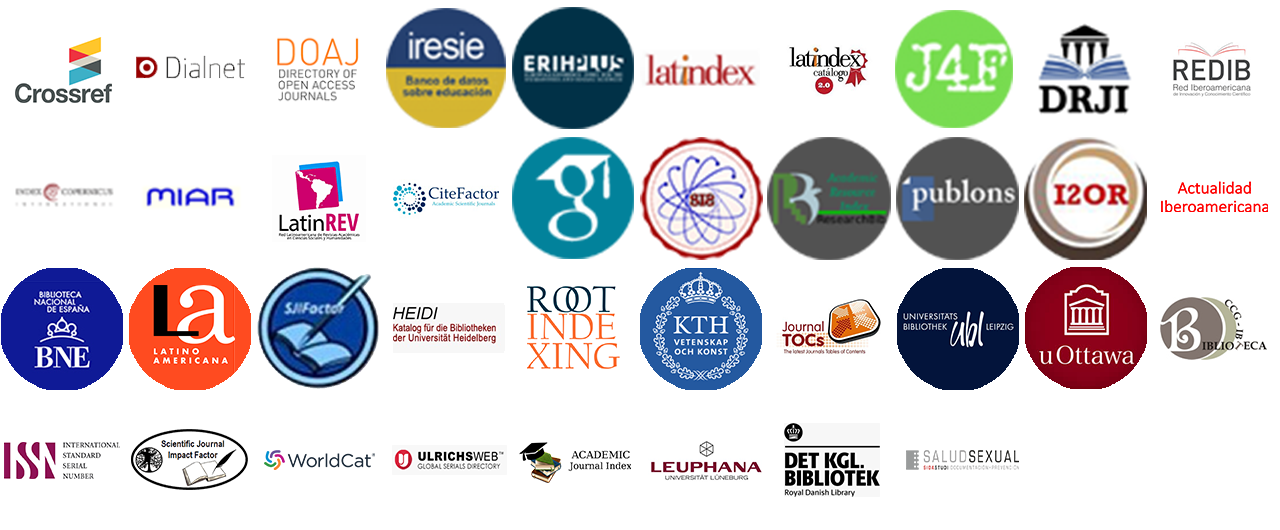Didactic-technological proposal for the study of the recorder in primary education
DOI:
https://doi.org/10.36825/RITI.10.20.008Keywords:
Recorder, ICT, Musical Education, Acoustic ComparisonAbstract
Recorder is used as an instrument in Primary Education centers. The students have a weekly group session of 60 minutes, making it difficult to individualize learning due to the high relationship and the little time available. Students learn outside the center with the responsibility of advancing alone in their study. For this reason, a digital tool is proposed as a complement to the teaching-learning process of the instrument, which offers the possibility of listening, showing a score, recording and defining the mistakes made, both to the students and to the teacher. In this way, the students will have a guide in their study outside the educational field and, the teacher, feedback of the learning process of each individual. This proposal has been included in an educational context, evaluating the results with a Primary Education group, showing improvements in the teaching-learning process of the students. This lies in an optimization of the time used by the students in their study as well as for the teacher, at the beginning of the class knowing the mistakes they make. Thanks to these collected data, information unknown until now, changes the traditional teaching method of the recorder.
References
Camino, M. (2014). Educa con TIC. Recuperado de: http://www.educacontic.es/blog/un-mundo-infinito-de-apps-musicales-educativas
Jambrina Leal, M. E. (2007). La flauta dulce en el área de Expresión artística de Educación Primaria. Comunidad Autónoma de Extremadura. Realidad, implicación y propuestas para el profesorado (Tesis Doctoral). Universidad de Extremeadura.
Lizarán Pardo, C., López Melgarejo, A. M. (2021). La flauta dulce en educación primaria: estudio de caso sobre la eficacia de diferentes metodologías para el aula. Revista InstrumentUM, (1), 13-29. Recuperado de: https://digitum.um.es/digitum/handle/10201/114107?mode=full
Escudero, M. P. (1990). Canciones para Flauta Dulce soprano y guitarra. Madrid: Real Musical.
Videla, M., Akoschky, J. (1992). Iniciación a la Flauta Dulce. Soprano en do. Tomo I. La Habana: Edición Revolucionaria.
Bravo, P. (2021). Propuesta metodológica para la enseñanza de la flauta dulce en Educación Primaria mediante el soporte de complementos tecnológicos para el aprendizaje autónomo (Tesis Doctoral). Universidad de Alicante.
Herrera, S. I., Fénnema, M. C. (2011). Tecnologías móviles aplicadas a la educación superior. Trabajo presentado en XVII Congreso Argentino de Ciencias de la Computación, Argentina. Recuperado de: http://sedici.unlp.edu.ar/handle/10915/18718
Bromley, K. (2012). Using Smartphones to Supplement Classroom Reading. Reading Teacher, 66 (4), 340-344. doi: https://doi.org/10.1002/TRTR.01130
Kongaut, C., Bohlin, E. (2016). Investigating mobile broadband adoption and usage: A case of smartphones in Sweden. Telematics and informatics, 33 (3), 742-752. doi: https://doi.org/10.1016/j.tele.2015.12.002
Sloboda, J. A. (2000). Individual differences in music performance. Trends in Cognitive Sciences, 4 (10), 397-403. doi: https://doi.org/10.1016/S1364-6613(00)01531-X
Kageyama, N. (2013). Músico a prueba de balas. Cuántas horas al día debes practicar. Recuperado de: https://bulletproofmusician.com/how-many-hours-a-day-should-you-practice/?highlight=how-many-hours-a-day-should-you-%20practice%2F
Molina, E. (2012). Automatic scoring of singing voice based on melodic similarity measures (MSc Thesis). Universitat Pompeu Fabra, Barcelona.
Hallam, S. (2001). The development of meta-cognition in musicians: Implications for education. British Journal of Music Education, 8 (1), 27-39. doi: https://doi.org/10.1017/S0265051701000122
Topping, K. J. (2005). Trends in peer learning. Educational Psychology, 25 (6), 631-645. doi: https://doi.org/10.1080/01443410500345172
Yagosesky, R. (2001). El Poder de la Oratoria. Caracas, Venezuela: Júpiter Editores.
Colwell, R. (2002). Assessment’s potential in music education. En M. C. More (Ed.) Critical Essays in Music Education (pp. 32). Routledge. doi: https://doi.org/10.4324/9781315095257-22
McLeod, P. (2008). Fast, Accurate Pitch Detection Tools for Music Analysis (PhD thesis). Department of Computer Science, University of Otago.
Published
How to Cite
Issue
Section
License
Copyright (c) 2022 Revista de Investigación en Tecnologías de la Información

This work is licensed under a Creative Commons Attribution-NonCommercial-NoDerivatives 4.0 International License.
Esta revista proporciona un acceso abierto a su contenido, basado en el principio de que ofrecer al público un acceso libre a las investigaciones ayuda a un mayor intercambio global del conocimiento.
El texto publicado en la Revista de Investigación en Tecnologías de la Información (RITI) se distribuye bajo la licencia Creative Commons (CC BY-NC
 ), que permite a terceros utilizar lo publicado citando a los autores del trabajo y a RITI, pero sin hacer uso del material con propósitos comerciales.
), que permite a terceros utilizar lo publicado citando a los autores del trabajo y a RITI, pero sin hacer uso del material con propósitos comerciales.



